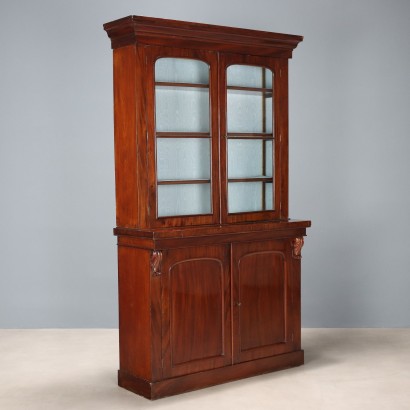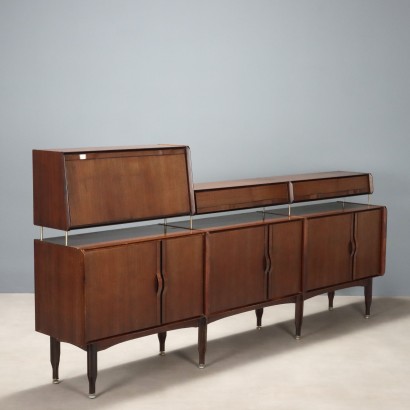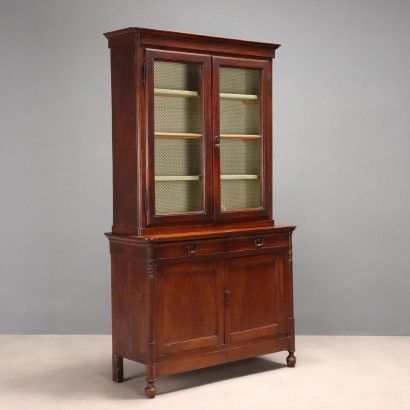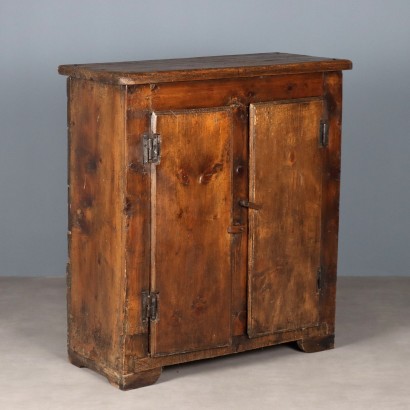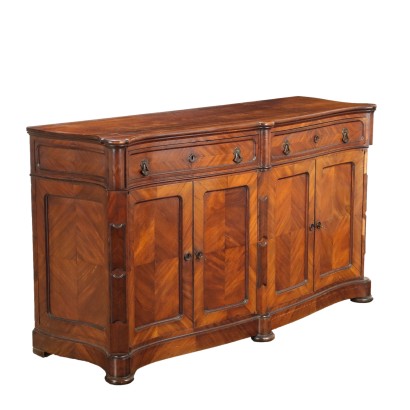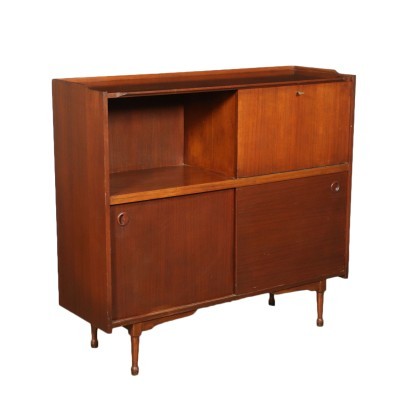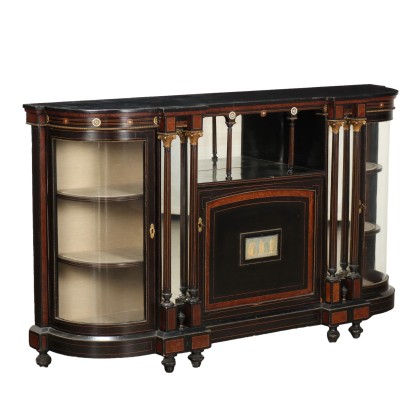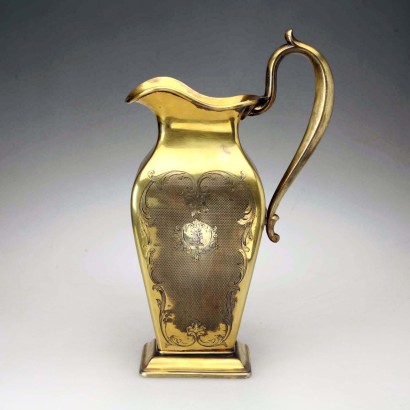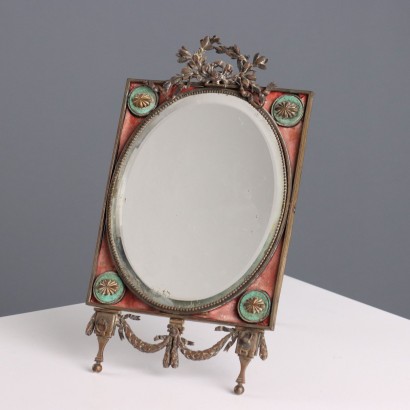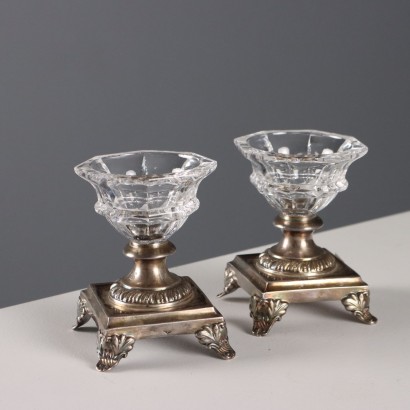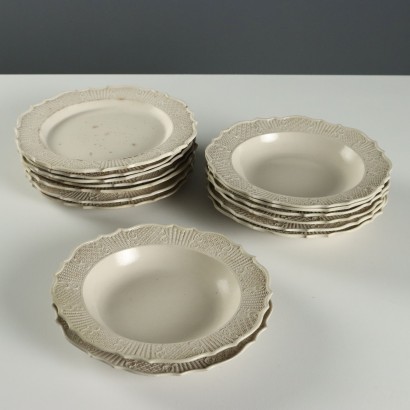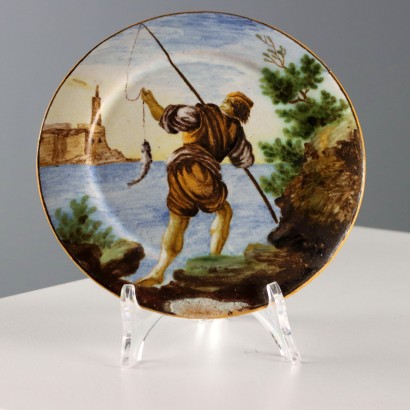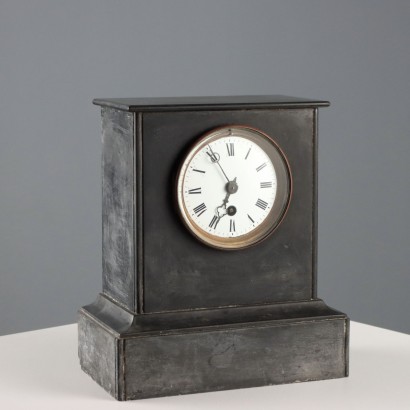Antique Victorian Bookcase Mahogany United Kingdom XIX Century - England, Late XIX Century
Features
England, Late XIX Century
Style: Victorian (1830-1900)
Age: 19th Century / 1801 - 1900
Origin: England
Main essence: Mahogany
Description
Victorian mahogany bookcase. The top has glass doors and three internal shelves, while the base has paneled doors. England, late 19th century.
Product Condition:
This item requires restoration and polishing due to age and wear. We strive to present the actual condition of the piece as accurately as possible with photos. If any details are unclear from the photos, the description will prevail.
Dimensions (cm):
Height: 216
Width: 121
Depth: 43,5
Additional Information
Style: Victorian (1830-1900)
It refers to one of the predominant styles used during the Victorian era.Like the latter, it refers approximately to the duration of the reign of Queen Victoria (June 20, 1837 – January 22, 1901), from which it took its name.
Characterized by a great expansion of the home furnishings market and by the new mechanized production possibilities, however not by great aesthetic innovations, but by the resumption of stylistic elements from various previous eras.
Find out more about the Victorian style with our insights:
Desk, Arthur Blain, Liverpool ca. 1840
The Austrian taste of Baroque
Victorian Furniture
The History of Victorian Art
Age: 19th Century / 1801 - 1900
19th Century / 1801 - 1900Main essence: Mahogany
It is one of the most precious and sought-after woods in cabinet making. It was discovered in Central America around 1600 and began to be imported to England in the 1700s. Much appreciated for its hardness and indestructibility, it became widespread following the blocking of walnut exports from France in 1720 and the consequent elimination of English import duties on mahogany from the colonies in America and India. The most valuable version comes from Cuba, but it became very expensive. At the end of the 18th century it began to be used also in France in Louis XVI, Directory and Empire furniture, its diffusion declined starting from when Napoleon, in 1810, forbade its import. It was generally used in the manufacture of elegant furniture, due to its characteristics and beautiful grain.Other customers have searched:
Ecco qualche spunto dal nostro blog e da FineArt per scoprire di più sul tema credenze:
Leggi di più
Una credenza che dialoga con il passatoCredenza doppio corpo, tesoro di intagli e decorazioni
Piccolo stipo, grande arredo
Stipo toscano a cavallo tra XVI e XVII
Credenza Barium di Luciano Frigerio
Credenza, Mathieu Befort Jeune, Parigi, terzo quarto XIX secolo
Mobile anni '60
Highboard '503' Gianfranco Frattini per Bernini
Mobile bar anni '40
Mobile Bar anni '40 '50, manifattura italiana
Sull'antiquariato in generale dai un'occhiata anche a:
Classic Monday: da un pezzo dei nostri magazzini alla storia dell'antiquariato
L'antiquariato dalla A alla Z: il Dizionario dell'Antiquariato
Il dizionario dell'antiquariato - Lastronatura
Il dizionario dell'antiquariato - Mascherone
Il dizionario dell'antiquariato - Natura morta
Il dizionario dell'antiquariato - Opificio
Il dizionario dell'antiquariato - Pastiglia
Il dizionario dell'antiquariato - Savonarola
Il dizionario dell'antiquariato - Rosone
Product availability
The product can be seen at Cambiago
Immediate availability
Ready for delivery within 2 working days from ordering the product.

